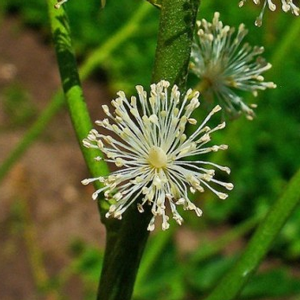Clomid is one of the most commonly used pharmaceuticals in the treatment of fertility concerns today. It is often the first therapy used. Clomid (also known as clomiphene) binds to estrogen receptors, inhibiting the action of estrogen (which is produced by developing follicles) on the hypothalamus in the brain. As a result, the pituitary gland perceives estrogen levels to be low (when they actually are not), and it responds by producing increased levels of both LH and FSH. This causes increased follicle production by the ovaries, and stimulation of ovulation.
As effective as this therapy can be at inducing ovulation, studies have indicated fertility specific side effects of clomiphene, many of which are caused by its antagonism to estrogen. The major fertility related side effects are: 1) thinning of the endometrial lining and 2) reduction of cervical mucous required for entry of sperm into the uterus.
One of the isomer forms of clomiphene has a slow excretion rate from the body (it can take more than 6 weeks to be excreted). If clomiphene therapy is used for longer than two months, side effects can be more pronounced, resulting in greater thinning of the endometrial lining which is needed for healthy implantation. In women over 40, endometrial lining thins naturally, and perhaps this is why clomiphene is often not an effective treatment in this group of patients.
For many women, the ovulation induction produced by this medication can be the answer to ovulation difficulties however therapy often must be stopped after a short period due to side effects over time. Estrogen therapy has been studied in conjunction with Clomid presumably to offset the anti-estrogenic effects of the medication, with mixed results. Some studies have found giving additional estrogen to women to be helpful, and others have found it to be of no benefit.
Recently, two studies have been completed on combining black cohosh (also known as Cimicifuga racemosa) with clomiphene in patients seeking treatment for infertility. Cimicifuga is a botanical therapy, often used in womens health to treat menopausal conditions such as hot flashes. Estrogenic effects of black cohosh remain highly debated, with early studies indicating that it directly affects estrogen receptors, and more recent studies showing that the effect of the plant may occur from an entirely different mechanism. Without yet knowing the exact mechanisms through which black cohosh works, several convincing studies have indicated it to be beneficial in the clinical treatment of hormonal disorders. A recent study has indicated that black cohosh may reduce proliferative effects of estrogens on tissues, which is in line with the effect of many phytoestrogens, however the mechanism for this remains to be elucidated.
In the first study conducted in 2008, black cohosh was found to significantly increase estradiol and LH concentrations in patients taking clomiphene therapy. Endometrial thickness, serum progesterone and clinical pregnancy rate in patients were significantly higher in the black cohosh group as compared to control.
The second study was completed in 2009. In this study of patients taking clomiphene, black cohosh given in the follicular phase was compared to estrogen therapy, presumably in order to determine which could reduce side effects more effectively. The black cohosh group needed significantly fewer days for healthy follicular development, had a thicker endometrial lining and had higher estradiol concentration at the time of HGG ovulation trigger when compared to the estrogen replacement therapy group. Clinical pregnancy rate was 14.0% in the estrogen replacement group versus 21.1% in the black cohosh group. Although this did not reach clinical significance, it appears that the black cohosh group did display many benefits overall when compared to the estrogen replacement group. When results from the previous study are also considered, it appears that this therapy may warrant serious consideration and further study for those undergoing clomiphene treatment.
More studies will need to be conducted in order to determine the mechanisms of this herbal medicine’s benefits for patients undergoing modern assisted reproductive technology therapies.
References
- Homburg, I. Clomiphene citrate—end of an era? a mini-review. Human Reproduction 2005 20(8):2043-2051
- Insler, V MB, BCh; Zakut, H MD; Serr, D M MB, ChB. Cycle Pattern and Pregnancy Rate Following Combined Clomiphene-Estrogen Therapy. April 73 (4) 4
- Massai et al. Clomiphene citrate affects cervical mucus and endometrial morphology independently of the changes in plasma hormonal levels induced by multiple follicular recruitment. Fertil Steril. 1993 Jun;59(6):1179-86
- Osmers et al. Efficacy and Safety of Isopropanolic Black Cohosh Extract for Climacteric Symptoms. Obstetrics & Gynecology: May 2005 – Volume 105 – Issue 5, Part 1 – pp 1074-1083
- Sandro Gerli, Hossein Gholami, Antonio Manna, Antonio Scotto Di Frega, Costantino Vitiello, Vittorio Unfer, Use of ethinyl estradiol to reverse the antiestrogenic effects of clomiphene citrate in patients undergoing intrauterine insemination: a comparative, randomized study, Fertility and Sterility, Volume 73, Issue 1, January 2000, Pages 85-89
- Shahin AY, Ismail AM, Shaaban OM. Supplementation of clomiphene citrate cycles with Cimicifuga racemosa or ethinyl oestradiol–a randomized trial. Reprod Biomed Online. 2009 Oct;19(4):501-7.
- Shahin, Ahmed Y.1; Ismail, Alaa M.1; Zahran, Kamal M.1; Makhlouf, Ahmad M.1 Adding phytoestrogens to clomiphene induction in unexplained infertility patients – a randomized trial. Reproductive BioMedicine Online, Volume 16, Number 4, April 2008 , pp. 580-588(9)





